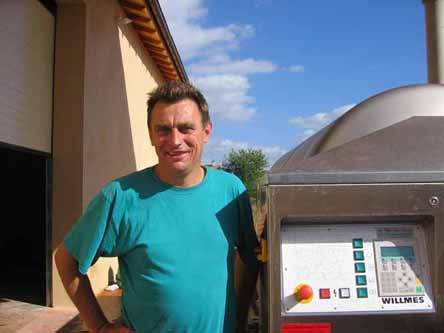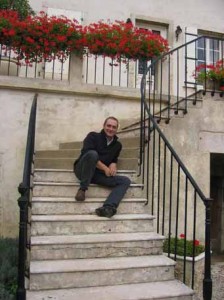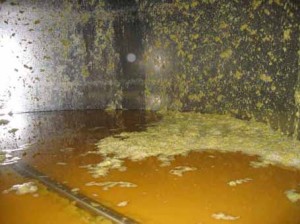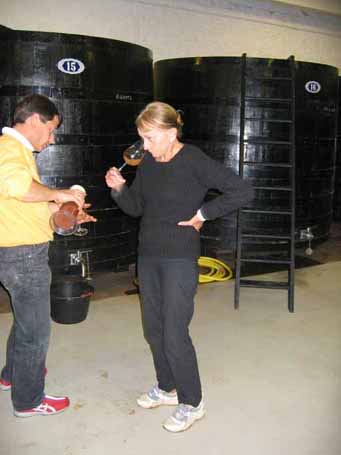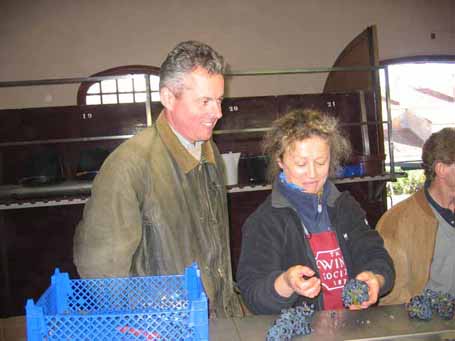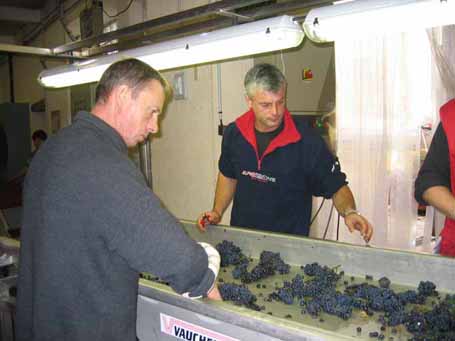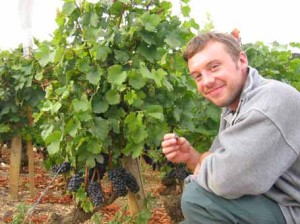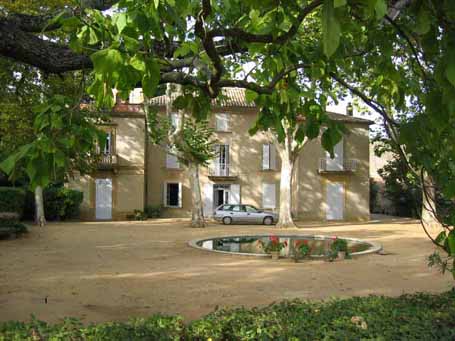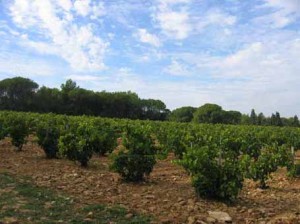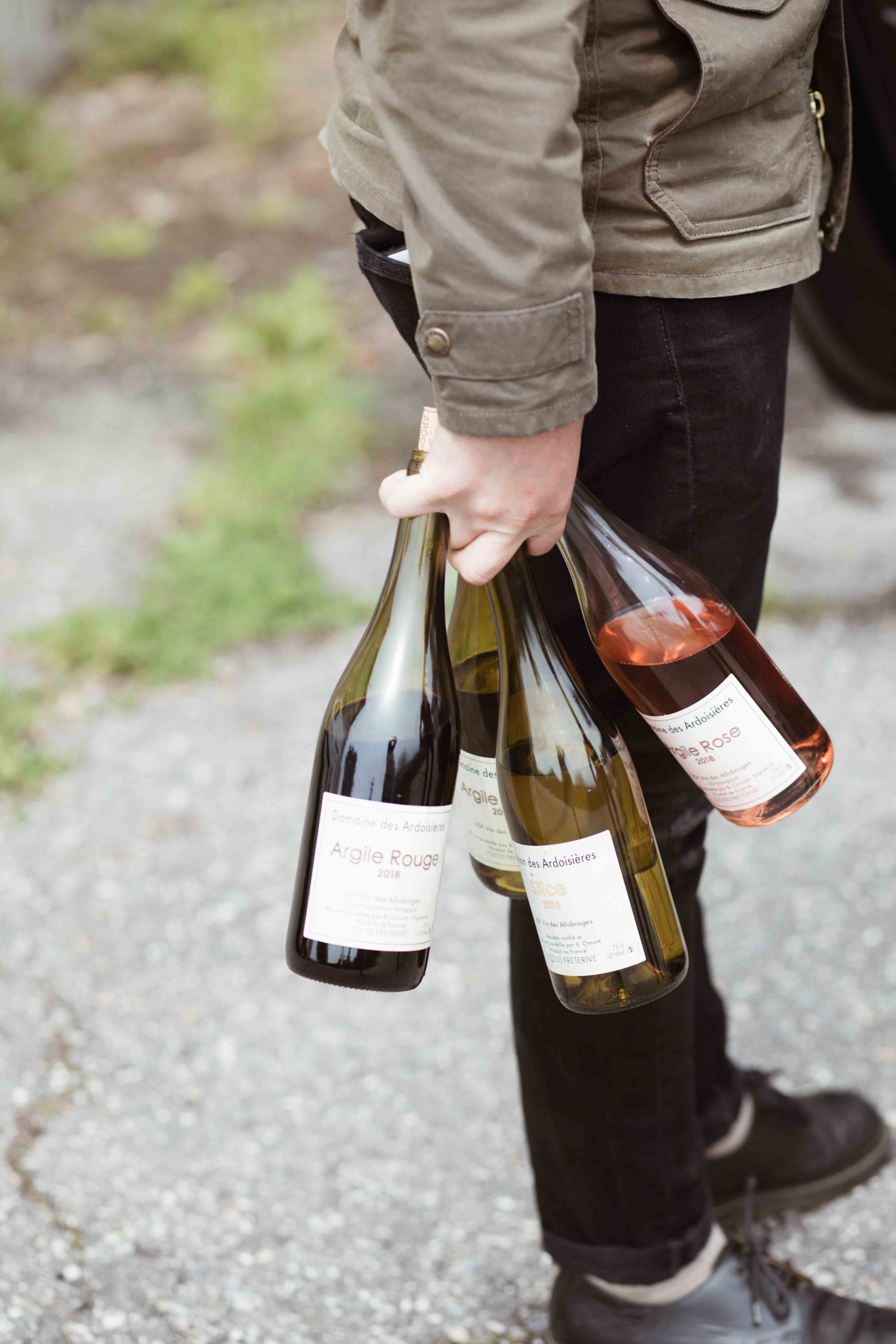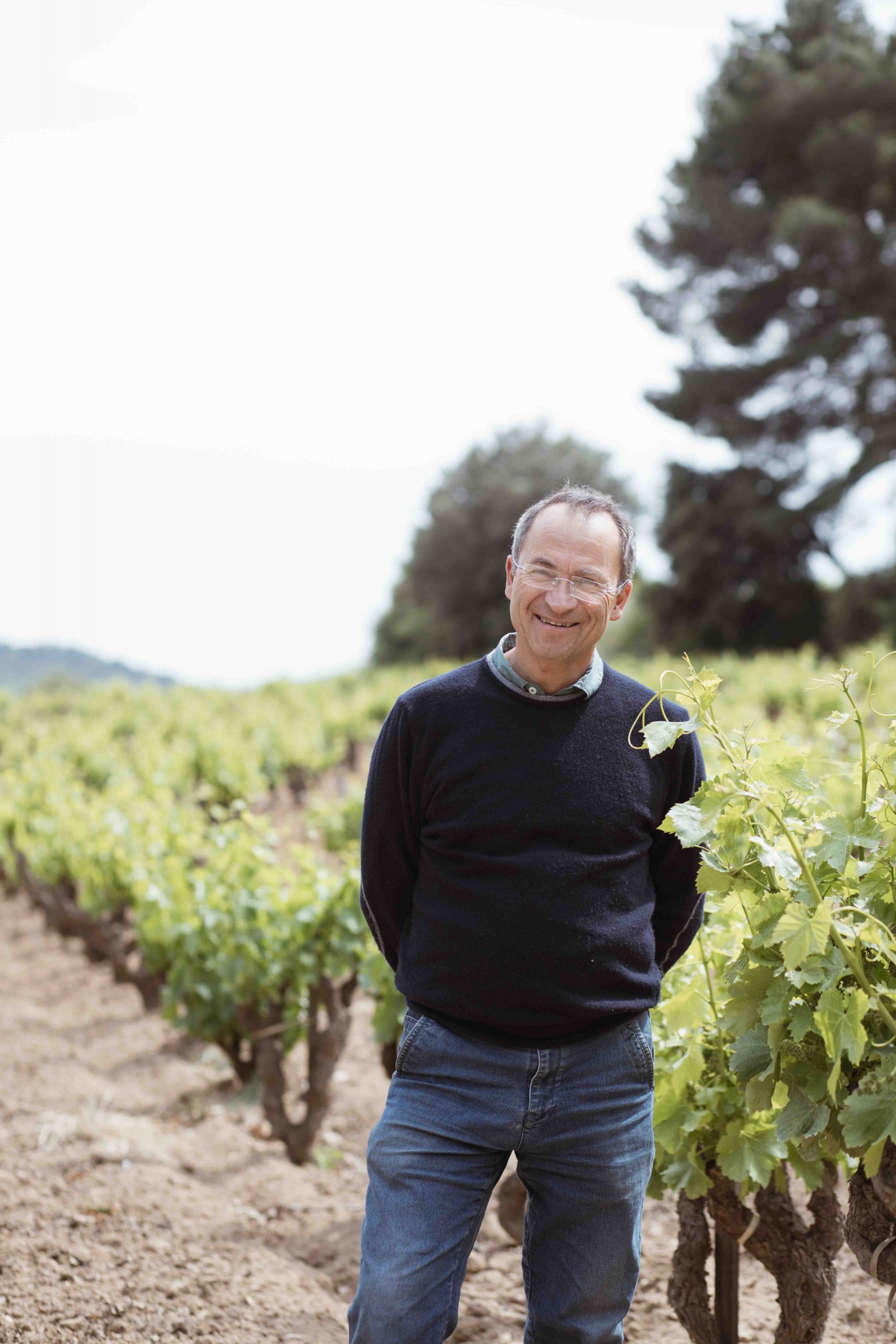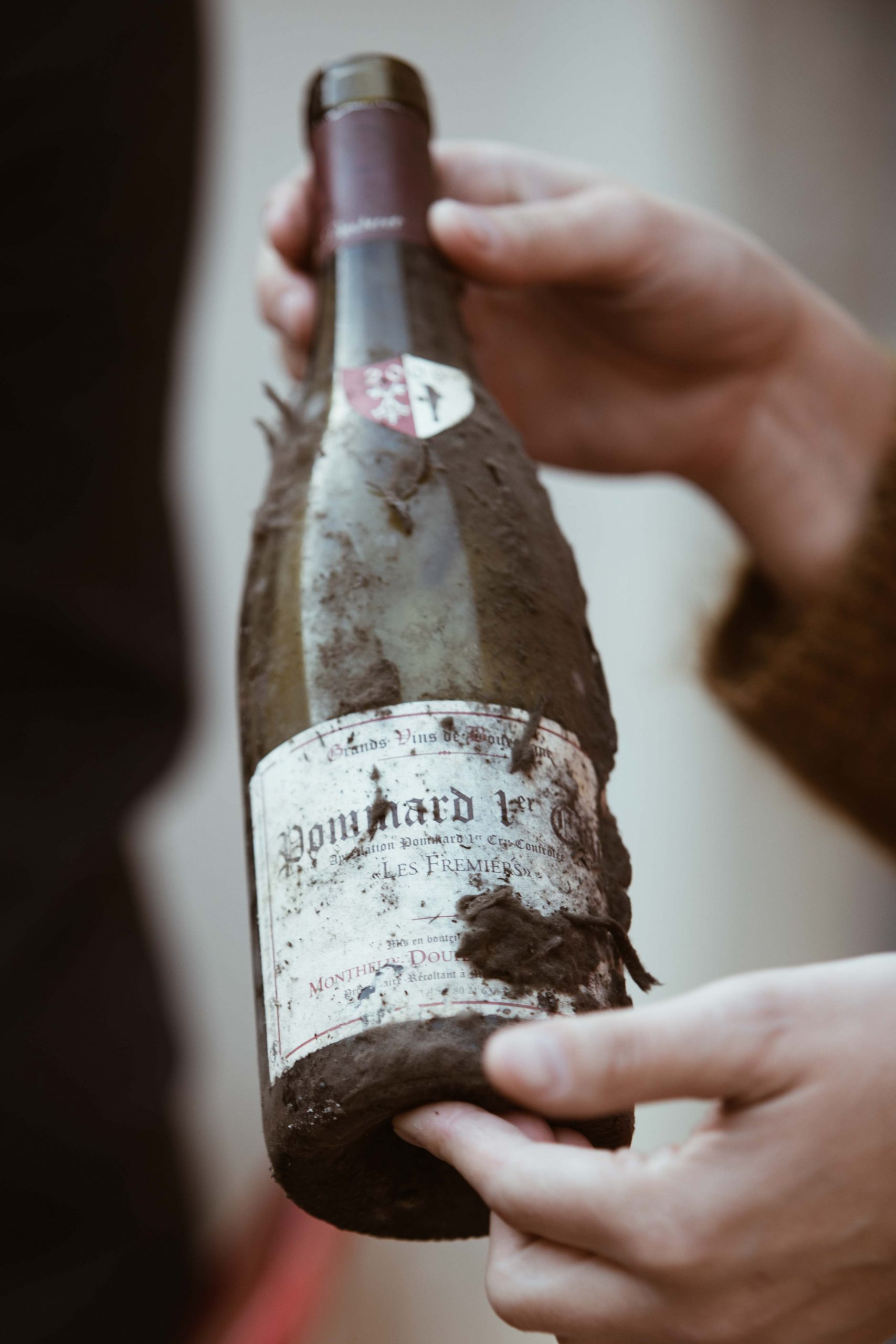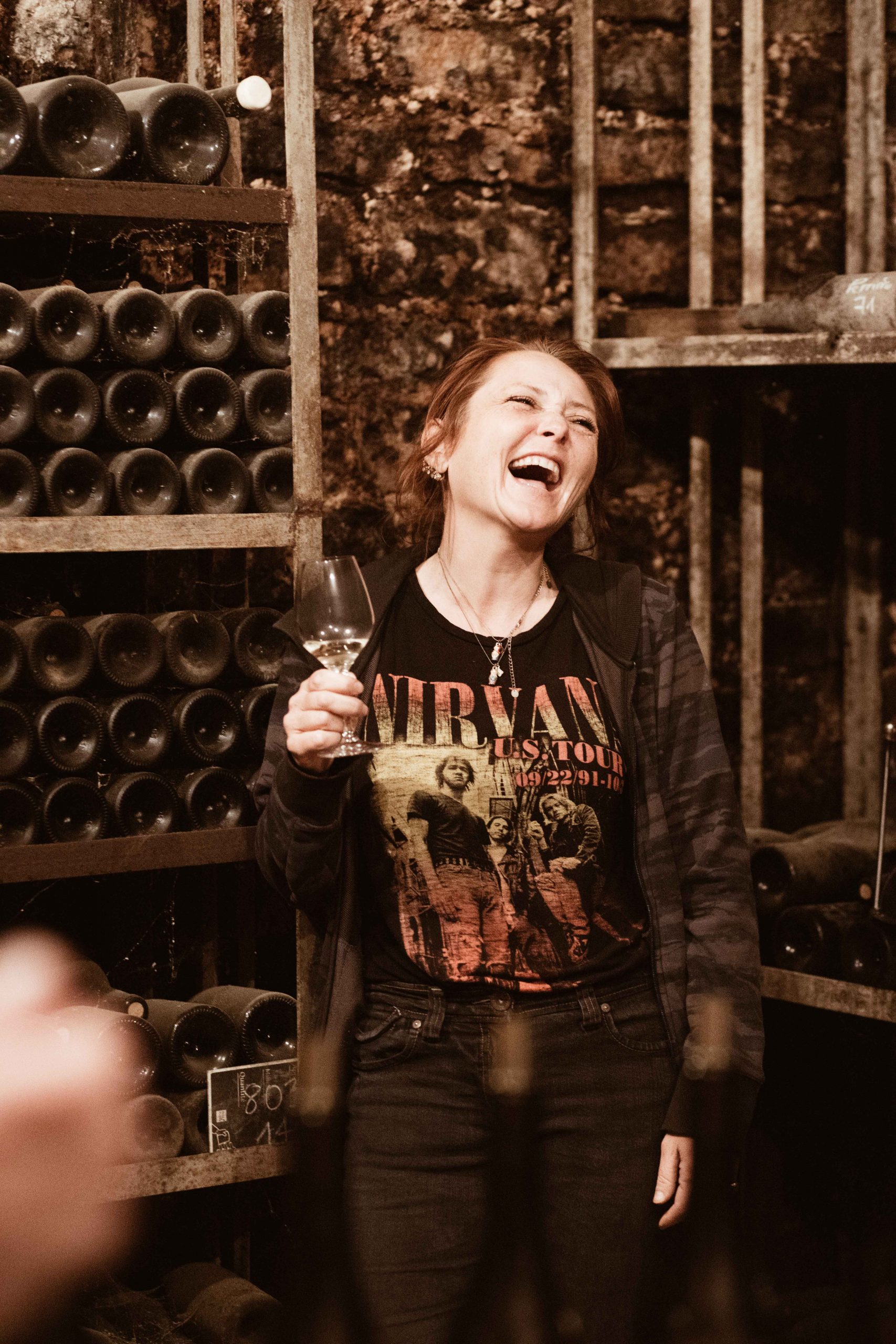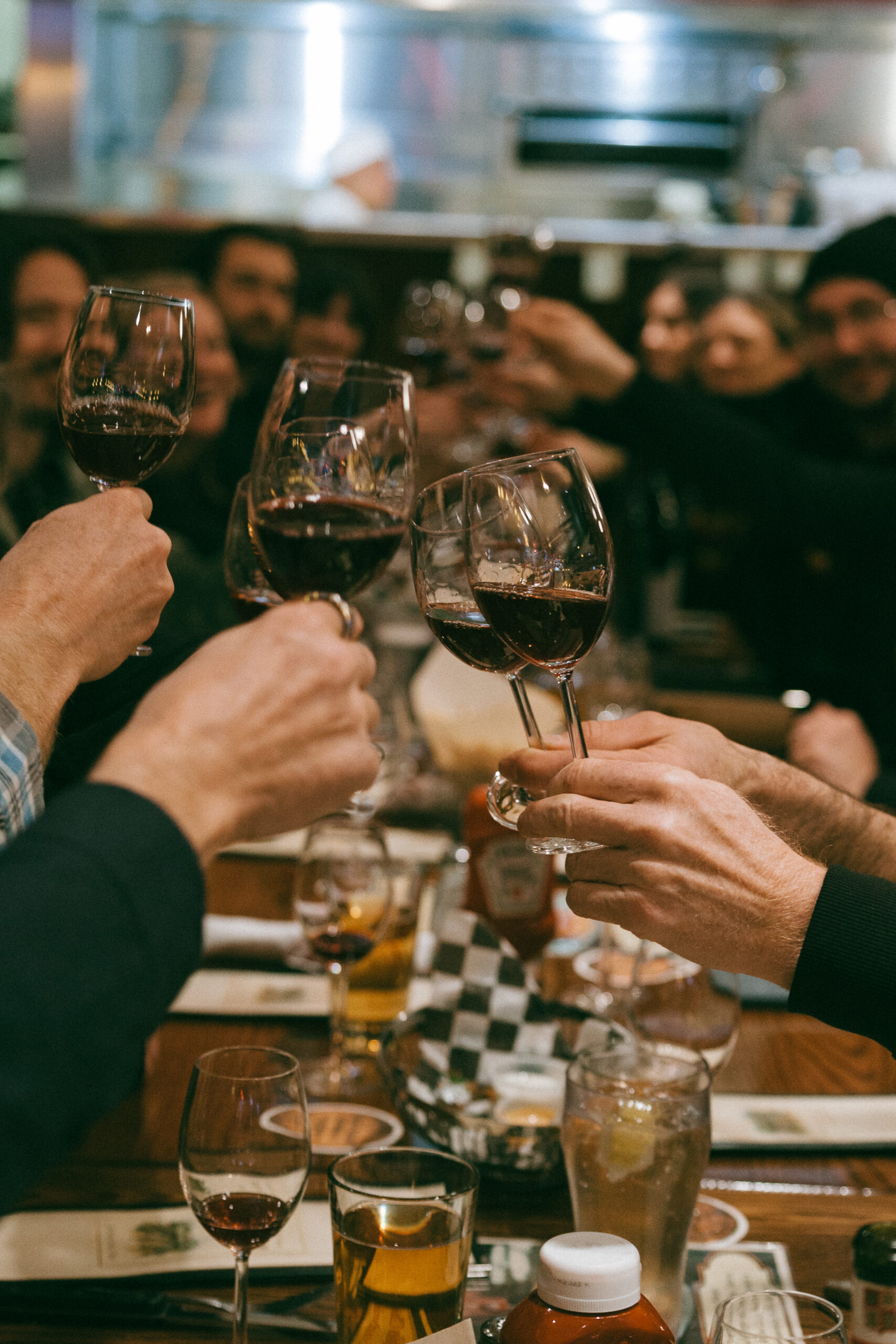At the end of August, the outlook was grim. Following the flowering, the cool nights of June led to oidium (powdery mildew). July was wet. August was overcast and cool, which meant no luminosity—so necessary for the ripening of the grapes. Then, two major hail storms unfurled over Pommard and Volnay, all the way to Marsannay devastating vineyards and causing 10% to 80% damage to the vines.
On the positive side, the wet winter that followed the severe draught of the Summer of 2003, revived the severely damaged but shallow-rooted younger vines. It seemed to be a promising normal crop for the serious vintner and an overabundant one for the others.
The oenologists had predicted a very serious outburst of oidium. Watchful winemakers treated the vines immediately while others did not. Green harvest was necessary because of the oversized crop. The odium and lack of luminosity also warranted deleafing. Damaged by hail, some bunches had to be removed to allow the healthy ones to aerate. For the conscientious winemaker who followed all the above steps, a miracle happened. September was warm and sunny and the grapes ripened very quickly.
In Beaujolais, Patrick Brunet started harvesting on September 10th. Because of the damage caused by the hail storms he had to sort out his grapes carefully and lost about 30% of his crop.
As for Dominique Cornin and, in fact, all the winemakers from Maconnais to Chablis, this short and fast ripening window of September had set up different ripening stages according to the exposure of the vineyard and its microclimate. As a result, Dominique was harvesting his Pouilly-Fuissé “Les Chevrières” (Hospices de Beaune) on September 11th, then his Beaujolais Blanc and Mâcon-Chaintré. Sugar, pH and acidity were on his checklist for every plot he owns. After a day in a stainless steel tank, his Mâcon-Chaintré juice was clear, pure honey with a nose of pineapple—a delicious grape juice before fermentation began.
In Chassagne-Montrachet, Michel Morey-Coffinet started harvesting on September 24th. Spared by hail storms, with the oidium under control, a little bit of botrytis was welcome. The normal crop had a great pH and acidity. The vineyard of Bâtard-Montrachet next to his was completely devastated by the odium. In fact, wine brokers were ordered by negociant houses to visit vineyards before the harvest to check the quality of the grapes. All over Burgundy, some vineyards were also declassified by AOC and the Villages Commission.
In Burgundy, Lalou Bize-Leroy was very excited with her Domaine d’Auvenay whites and predicted an exciting vintage of normal yield with an average 25 hectoliters/hectare. She described her whites as very pure, very focused and perfectly balanced.
As for Domaine Leroy, she started her harvest with her Pommard “Les Vignots” which was severely damaged by the hail storms. Because of its proximity to Meursault, her Volnay-Santenots was spared. She is quite pleased with her Corton Renardes and the whole harvest was over by October 4th. As usual, every bunch of grapes was scrutinized carefully before entering their assigned wooden vat.
Jean-Marc Brocard started harvesting on October 1st. Two years ago, Julien Brocard converted a single vineyard, Chablis “La Boissonneuse,” to biodynamy. His vines looked remarkably healthy, with no sign of odium. Over all, Chablis should have a great and normal vintage.
Denis Mortet did an impressive job on his vineyard. In August, he cancelled his vacation to take meticulous care of it. On September 24th, he first harvested a very healthy Chambertin. I walked with him to the back of his winery to look at his Gevrey-Chambertin “Combe du Dessus.” It was impeccable. The table de tris (sorting table) helped to remove the under ripe bunches. Let’s rejoice because he will have a normal crop. He has decided to blend all of his lieu-dits: “They will complete each other,” he declared.
On September 27th, I visited Christophe Perrot-Minot who was busy screening every single bunch on his table de tris. After consulting the forecast which promised sunny and warm weather for the next 10 days, he decided to take his time. As a result, the phenolic maturity was perfect, with no harsh tannins and a sugar content between 13.2º and 13.7.º No chaptalization was necessary. Although the deleafing and pruning of the damaged bunches had been done in August, he carefully screened some of his vineyards that had been damaged. He claimed that he spent 10 hours sorting out his Chambertin “Clos de Bèze” and another 10 hours on his Gevrey-Chambertin “Les Cazetiers” (75 boxes!). Big, fat bunches were eliminated. In the final analysis, the crop will be almost normal. Right now, his wine–in vats and going through cold maceration—shows lots of fruit, soft tannin and great acidity. Christophe is in heaven! He relayed to me that, after the two hail storms, most vineyards looked so ravaged that insurance companies had estimated up to 80% damage. Fortunately, hard work in the vineyards and the clement September weather turned the harvest around.
In Marsannay, Cyril Audoin was getting ready to harvest on the 25th. Very optimistic, he was gathering sample grapes from different vineyards to evaluate their degree of ripeness. We drove together to check his new acquisition of a small plot of Pommard “En Moreau” on the northern side of Pommard, facing Pommard “Les Arvelets”on the southern exposure. He bought the vineyard last winter and was able to revive those 45 year-old vines. We went up and down, taking samples and tasting grapes. Some vines were perfect, some were not, but altogether the average was quite positive. The northern vineyards were definitely not as badly damaged by hail storms. In a recent telephone conversation, Cyril, who just finished his harvest on October 2nd, was very positive with the outcome of his 2004 vintage. In 2003 the “Vendanges” lasted 4.5 days. This year, it took 8 days. While the yield is 10% of normal, the quality is very promising.
On September 28th, I drove to the Rhône Valley where Yann Chave was, as usual, waiting for his Syrah to fully ripen. He will have a good and normal crop.
Laurence Féraud was ecstatic about the Mistral (northern wind) that had been blowing steadily for two weeks after the rain that fell at the beginning of September and that would prevent rot from developing on the bunches.
I paid a long visit to Château Rayas where Emmanuel Reynaud was picking grapes with a small group of Moroccans. He had already harvested his Château de Fonsalette “Syrah” and Grenache. This mostly forested estate of 300 acres has only 25 acres of vineyard and 2.5 acres of Olive trees. The vineyard, a blend of clay and sand, is located right behind the Château.
I spent the afternoon visiting the estate with Françoise Reynaud. She explained that, back in 1993, they formed a corporation to avoid excessive taxation and only declared 30 acres of vineyard. By law, they can only plant 2/10th of a hectare per year, therefore it would take 10 years to plant 2 hectares (5 acres). She showed me her grandfather’s vineyard that hardly produced any sizeable crop, but she insists on keeping it that way!
She recalled that two major vintages, 1929 for the whites and 1934 for the reds, put Château Rayas on the map. Her father, Louis, sold all of his wife’s assets in order to buy Château des Tours which belongs to Bernard, Jacques’ brother, and his siblings. Rayas is divided into small plots surrounded by trees and shrubs. You go from one plot to the other on trails. They have names such as Triangle, Ponsard, Verger, La Source, Vigas and then plot 25/26 and 1, 2, 3, then 6 and 7 (there are no 4 nor 5 and nobody knows why) and then, of course, Pignan.
The Ponsard vineyard is planted with Grenache Blanc on very sandy soil, perfect for the varietal and will be harvested last. Emmanuel explained that Grenache is much slower to ripen than Syrah and this is the reason for harvesting late. I must admit that, after 35 years, it was my first grand tour of the estate and that took a lot of walking on a delightfully warm and sunny day. This is a great vintage in the works for Château Rayas!
On a side note, in addition to the stress that our French winemakers have to deal with in a difficult climate, they have to put up with bureaucracy. During my visit to Dominique Cornin, I offered my help for the afternoon. I was flatly refused because the labor inspectors are now checking in without notice on the workers in the field or at the wineries to see if every worker has been properly registered (including the winemaker-owner’s wives). Two gendarmes (policemen) in uniform accompany them. No, I could not volunteer my services and work for free! To further illustrate this asinine rule, Emmanuel Reynaud’s father, an octogenarian who used to be in charge of Château des Tours, came around the winery to see the action. He was spotted by the labor inspector and Emmanuel had to diplomatically tell him that his father was mentally impaired and was not part of the work team and that it was better for him to be here than sitting in a chair at home. Inquiring about the cost of labor, I was informed that a harvester is paid 65 Euros a day, plus lodging, breakfast, lunch and dinner and it costs the winemaker just as much in taxes.
In summary, Burgundy will have the best and the worst in 2004. However, in the Rhône, a very good vintage is indeed expected.

